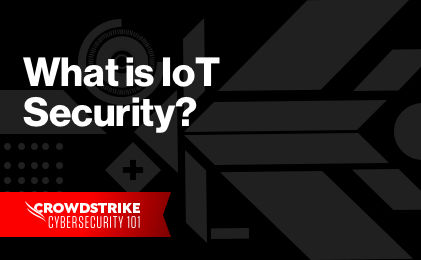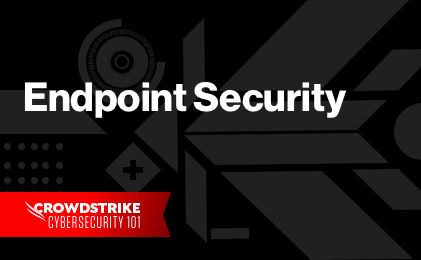IT Security Defined
IT security is the overarching term used to describe the collective strategies, methods, solutions and tools used to protect the confidentiality, integrity and availability of the organization’s data and digital assets.
A comprehensive IT security strategy leverages a combination of advanced technologies and human resources to prevent, detect and remediate a variety of cyber threats and cyberattacks. It will include protection for all hardware systems, software applications and endpoints, as well as the network itself and its various components, such as physical or cloud-based data centers.
Why Do You Need IT Security?
Over the past decade, virtually every aspect of business has shifted online. This has put every organization at risk of being a target of a cyberattack, the goal of which may be to steal sensitive information, such as customer data and payment details, intellectual property or trade secrets, or simply to harm the reputation of the organization.
Further, the growing popularity of remote-based work, the shift to the cloud, as well as a proliferation of connected devices have provided hackers and other cybercriminals near limitless possibilities for launching an attack. This expanded attack surface, combined with the growing sophistication of digital adversaries, has required organizations to strengthen their security practices and update them to protect cloud-based assets, in particular.
To some extent IT security is a matter of law. Some countries legally require businesses to invest in the development and implementation of IT security concepts, while other regions provide strict standards as it relates to data privacy and security.
Types of IT Security
IT security is an umbrella term that incorporates any plan, measure or tool intended to protect the organization’s digital assets. Elements of IT security include:
Cybersecurity is the act of defending digital assets, including networks, systems, computers and data, from cyberattacks.
Endpoint security, or endpoint protection, is the process of protecting a network’s endpoints – such as desktops, laptops and mobile devices — from malicious activity.
Cloud security is the collective term for the strategy and solutions that protect the cloud infrastructure, and any service or application hosted within the cloud environment, from cyber threats.
Application security refers to those measures taken to reduce vulnerability at the application level so as to prevent data or code within the app from being stolen, leaked or compromised.
Network security refers to the tools, technologies and processes that protect the network and critical infrastructure from cyberattacks and nefarious activity. It includes a combination of preventative and defensive measures designed to deny unauthorized access of resources and data.
Container security is the continuous process of protecting containers — as well as the container pipeline, deployment infrastructure and supply — from cyber threats.
IoT security is a subsect of cybersecurity that focuses on protecting, monitoring and remediating threats related to the Internet of Things (IoT) and the network of connected IoT devices that gather, store and share data via the internet.
The Difference Between IT Security and Information Security (InfoSec)
Sometimes used interchangeably, IT security and information security (InfoSec) are two distinct concepts. The main difference between the two terms has to do with the form in which data is stored and, by extension, how it is protected.
InfoSec refers to the protection of data, no matter its form. This can refer to securing data stored electronically, as well as physical security measures such as locking filing cabinets or requiring access keys to enter an office.
IT security, on the other hand, is limited to protecting data and other assets only in a digital form.
Expert Tip
IT and infosec teams need to work together often to determine where to focus often limited resources when it comes to patching and addressing security vulnerabilities. Learn more about the patch management process and best practices:
The Difference Between IT Security and Cybersecurity
Another important distinction can be made between IT security and cybersecurity.
Cybersecurity refers to protecting the organization from unauthorized access and malicious attacks.
IT security, by comparison, is broader in nature. It includes any capability that helps protect and preserve data confidentiality, integrity and availability from any digital threat. This can include protection from security issues that are non-malicious in nature, such as faulty hardware components or improper system configurations.
IT Security Risks
IT security can be divided into two main areas: system disruptions and targeted malicious attacks.
A system disruption can include the temporary interruption of business operations due to any system component, such as faulty hardware, network failures or software glitches. In these scenarios, the business is at risk of losing revenues due to inoperability or the possibility of reputational harm.
While maintaining full system operation is an important part of IT security, the more pressing aspect relates to cyberattacks, most of which are designed to access or steal data and other sensitive information. Common cyberattacks include:
Advanced Persistent Threats (APTs)
An advanced persistent threat (APT) is a sophisticated, sustained cyberattack in which an intruder establishes an undetected presence in a network in order to steal sensitive data over a prolonged period of time. An APT attack is carefully planned and designed to infiltrate a specific organization, evade existing security measures and fly under the radar.
Malware (malicious software) is a term used to describe any program or code that is created with the intent to do harm to a computer, network or server. Common types of malware include viruses, ransomware, keyloggers, trojans, worms and spyware.
Phishing is a type of cyberattack that uses email, SMS, phone or social media to entice a victim to share personal information — such as passwords or account numbers — or to download a malicious file that will install viruses on their computer or phone.
A Denial-of-Service (DoS) attack is a malicious, targeted attack that floods a network with false requests in order to disrupt business operations. In a DoS attack, users are unable to perform routine and necessary tasks, such as accessing email, websites, online accounts or other resources that are operated by a compromised computer or network.
A distributed-denial-of-service (DDoS) attack is an attempt by malicious actors to render a service or a system (eg. server, network resource, or even a specific transaction) unavailable by flooding the resource with requests.
A botnet is a network of compromised computers that are supervised by a command and control (C&C) channel. The person who operates the command and control infrastructure, the bot herder or botmaster, uses the compromised computers, or bots, to launch attacks designed to crash a target’s network, inject malware, harvest credentials or execute CPU-intensive tasks.
Insider Threats
An insider threat is a cybersecurity attack that originates within the organization, typically through a current or former employee.
IT Security Best Practices
Despite the prevalence of the term IT security, security is not “an IT problem.” Nor is it an issue that will be solved by technology alone. In order to craft a comprehensive and effective cybersecurity strategy, the organization must consider its policies, processes and technologies across every business function. Further, all network users must be adequately trained to practice responsible online behavior, as well as how to spot the signs of common network attacks.
A comprehensive cybersecurity strategy is absolutely essential in today’s connected world. The most effective cybersecurity strategies blend human resources with advanced technological solutions, such as AI, ML and other forms of intelligent automation to better detect anomalous activity and increase response and remediation time.
Components of a comprehensive IT security strategy include:
Endpoint detection and response (EDR) is a comprehensive solution that identifies and contextualizes suspicious activity to help the security team prioritize response and remediation efforts in the event of a security breach.
Managed detection and response (MDR) is a cybersecurity service that combines technology and human expertise to perform threat hunting, monitoring and response. The main benefit of MDR is that it helps rapidly identify and limit the impact of threats without the need for additional staffing.
Incident response (IR) refers to the steps the organization takes to prepare for, detect, contain and recover from a data breach. This component typically culminates in the development of an incident response plan, which is a document that outlines the steps and procedures the organization will take in the event of a security incident.
Next-generation antivirus (NGAV) uses a combination of artificial intelligence, behavioral detection, machine learning algorithms and exploit mitigation, so known and unknown security threats can be anticipated and immediately prevented.
Penetration testing, or pen testing, is the simulation of real-world attacks in order to test an organization’s detection and response capabilities.








